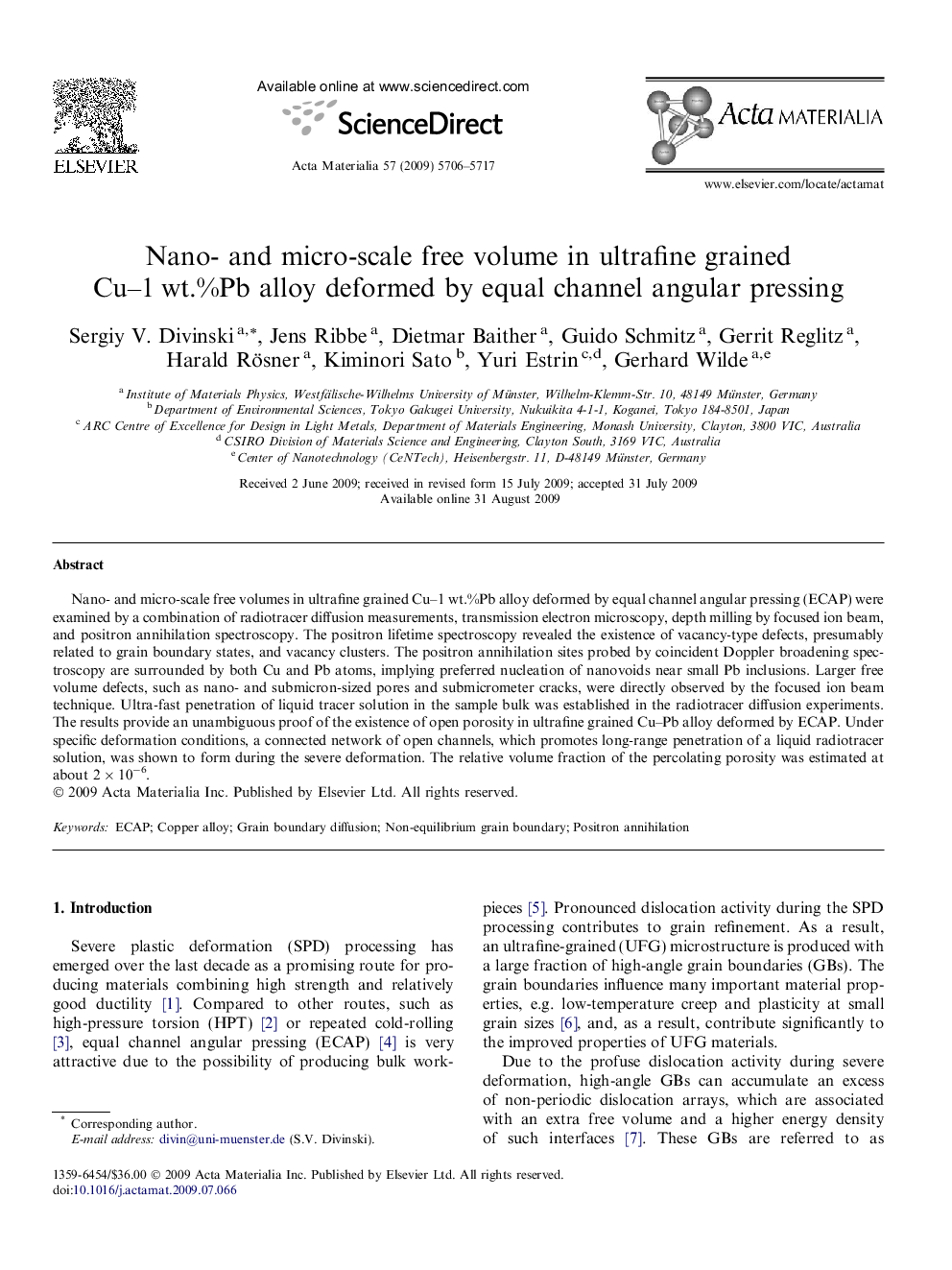| Article ID | Journal | Published Year | Pages | File Type |
|---|---|---|---|---|
| 1447914 | Acta Materialia | 2009 | 12 Pages |
Nano- and micro-scale free volumes in ultrafine grained Cu–1 wt.%Pb alloy deformed by equal channel angular pressing (ECAP) were examined by a combination of radiotracer diffusion measurements, transmission electron microscopy, depth milling by focused ion beam, and positron annihilation spectroscopy. The positron lifetime spectroscopy revealed the existence of vacancy-type defects, presumably related to grain boundary states, and vacancy clusters. The positron annihilation sites probed by coincident Doppler broadening spectroscopy are surrounded by both Cu and Pb atoms, implying preferred nucleation of nanovoids near small Pb inclusions. Larger free volume defects, such as nano- and submicron-sized pores and submicrometer cracks, were directly observed by the focused ion beam technique. Ultra-fast penetration of liquid tracer solution in the sample bulk was established in the radiotracer diffusion experiments. The results provide an unambiguous proof of the existence of open porosity in ultrafine grained Cu–Pb alloy deformed by ECAP. Under specific deformation conditions, a connected network of open channels, which promotes long-range penetration of a liquid radiotracer solution, was shown to form during the severe deformation. The relative volume fraction of the percolating porosity was estimated at about 2 × 10−6.
